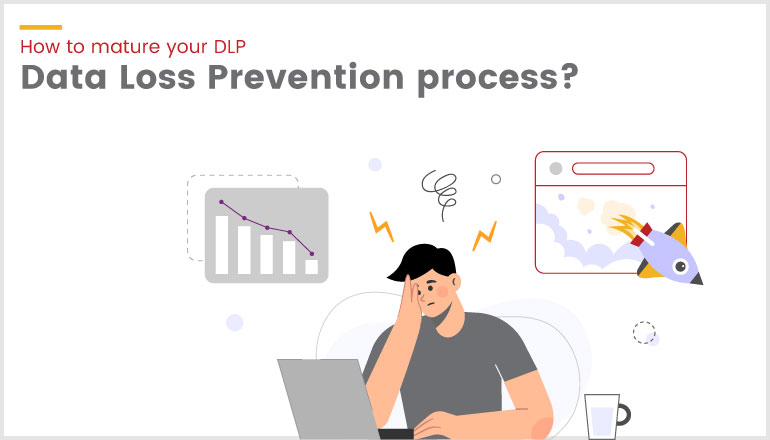Data loss prevention (also known as DLP) is a set of guidelines and software programmes. Its objective is to keep an eye on the data in the system and guard against the likelihood of data loss or breach for a variety of causes.
To secure data at rest, in motion, and in use, data loss prevention software and solutions monitor and control endpoint activity, filter data streams on corporate networks, and monitor data in the cloud. Additionally, DLP offers reporting to satisfy compliance and auditing needs as well as pinpoint weak points and anomalies for forensics and incident response.
Three different data kinds must be handled differently:
- Informational property:- Design documents, process documentation, and source code.
- Corporate Data:- Records related to the law and finances, documents for strategy planning, and personnel data.
- User Information:- Name, address, phone number, place of residence, preferences, social security numbers, credit card numbers, medical records, financial statements, and other personally identifiable information.
Data loss prevention software types:
Software for data loss prevention comes in three main categories. It's crucial to remember that these DLP technologies can be used in a variety of ways.
Network DLP
The kind of DLP software where the programmes integrate with every network data point. Due to the magnitude of diverse data operations, this type of DLP is frequently employed in corporate networks as a precaution.
Storage DLP
For data lakes on cloud storage, this kind of data loss prevention programmes is used. Its main concern is maintaining the privacy and security of the data in the data warehouse. Monitoring the sensitive data in the storage as well as maintaining its access configuration are all part of the procedure. It resembles a surveillance service in that it has an alarm.
Endpoint DLP
This kind of DLP software keeps track of data transfer between devices, storage units, or accounts. As an illustration, let's say you and a business analyst are exchanging a market research study. The system's log contains a record of this action.
Four Maturity metrics are used to measure how well data loss prevention techniques work.
The maturity of a process is by definition a structurally complex, intellectually abstract, and potentially highly context-dependent concept. This example of a data protection programmes is no different. In reality, organizational definitions of purpose, tool functionalities, and practitioner viewpoints might amplify its abstract nature.
The subject of programmes maturity is difficultly arbitrary. Obfuscating an evaluation by using ambiguous definitions can easily reduce its usefulness and accuracy, turning a labor of love into a contentious talking point instead of the useful and tangible instrument it should be for making strategic decisions and operational planning.
Following are the names, descriptions, and examples of each maturity level:
Initial Seek
This early phase of fast dynamic change typical of implementations is represented by the lowest maturity level for each crucial piece. Organizations are still in the process of identifying stakeholders for each important component, gathering requirements and preliminary capabilities, and starting to produce (if not actually use) metrics data for reporting.
Stable Technique
Processes have now undergone preliminary testing and organizational deployment and are repeatable. Even though the procedures may not have been precisely adjusted, they still consistently deliver results that are in line with the goals. At least a preliminary version of the process documentation is finished, and it can be used by others to recreate the process.
Structured Development
Because the level is defined by improvement processes having been built into the process design and with a defined structural process that subjects the process to improvement pressures, it tends to distinguish actively maturing DLP programmes from those that have encountered an organizational roadblock.
It is crucial to keep in mind that at this stage, the process is still mostly reactive to input even though it is intended to promote self-improvement.
Proactive Evolution
Active invention aimed at process improvement characterises the highest possible level. At this stage, the process is efficient and optimized, and it is built to continually look for ways to improve its surroundings. Some organizations aim for this maturity level before the programmes can truly reap the rewards of its value, which stymies efforts and creates a frustrating gap between effort and added value that can seriously undermine the perceived value of a programmes.
It has analytical capabilities that integrate corollary pattern recognition into new threat detection, remediators educated for developing data protection risks, and remediators.
Conclusion
To keep your company's data secure and completely in control in the modern world, you must first adopt a data loss prevention system. Data protection policies have a lot of additional advantages that might help you grow your organization.
A well-crafted prevention of data loss policy is one of the foolproof safeguards that can prevent you from suffering financial and reputational losses as a result of hostile threats, system failures, and inadvertent human mistake, that are becoming increasingly common. As a result, you must implement the article's industry standards for data loss prevention.


